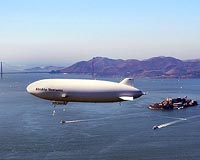| . |  |
. |
London, UK (SPX) Nov 18, 2009 The strongest evidence yet that the rise in atmospheric CO2 emissions continues to outstrip the ability of the world's natural 'sinks' to absorb carbon is published in the journal Nature Geoscience. An international team of researchers under the umbrella of the Global Carbon Project reports that over the last 50 years the average fraction of global CO2 emissions that remained in the atmosphere each year was around 43 per cent - the rest was absorbed by the Earth's carbon sinks on land and in the oceans. During this time this fraction has likely increased from 40 per cent to 45 per cent, suggesting a decrease in the efficiency of the natural sinks. The team brings evidence that the sinks are responding to climate change and variability. The scientists report a 29 per cent increase in global CO2 emissions from fossil fuel between 2000 and 2008 (the latest year for which figures are available), and that in spite of the global economic downturn emissions increased by 2 per cent during 2008. The use of coal as a fuel has now surpassed oil and developing countries now emit more greenhouse gases than developed countries - with a quarter of their growth in emissions accounted for by increased trade with the West. Lead author Prof Corinne Le Quere of the University of East Anglia (UEA) and the British Antarctic Survey said: "The only way to control climate change is through a drastic reduction in global CO2 emissions. The Earth's carbon sinks are complex and there are some gaps in our understanding, particularly in our ability to link human-induced CO2 emissions to atmospheric CO2 concentrations on a year-to-year basis. But, if we can reduce the uncertainty about the carbon sinks, our data could be used to verify the effectiveness of climate mitigations policies." The main findings of the study include: + CO2 emissions from the burning of fossil fuels increased by two per cent from 2007 to 2008, by 29 per cent between 2008 and 2000, and by 41 per cent between 2008 and 1990 - the reference year of the Kyoto Protocol. + CO2 emissions from the burning of fossil fuels have increased at an average annual rate of 3.4 per cent between 2000 and 2008, compared with one per cent per year in the 1990s. + Emissions from land use change have remained almost constant since 2000, but now account for a significantly smaller proportion of total anthropogenic CO2 emissions (20 per cent in 2000 to 12 per cent in 2008). + The fraction of total CO2 emissions remaining in the atmosphere has likely increased from 40 to 45 per cent since 1959, models suggests this is due to the response of the natural CO2 sinks to climate change and variability. + Emissions from coal are now the dominant fossil fuel emission source, surpassing 40 years of oil emission prevalence. + The financial crisis had a small but discernable impact on emissions growth in 2008 - with a two per cent increase compared with an average 3.6 per cent over the previous seven years. On the basis of projected changes in GDP, emissions for 2009 are expected to fall to their 2007 levels, before increasing again in 2010. + Emissions from emerging economies such as China and India have more than doubled since 1990 and developing countries now emit more greenhouse gases than developed countries. + A quarter of the growth in CO2 emissions in developing countries can be accounted for by an increase in international trade of goods and services. The researchers called for more work to be done to improve our understanding of the land and ocean CO2 sinks, so that global action to control climate change can be independently monitored. The sinks have a major influence on climate change and are important in understanding the link between anthropogenic CO2 emissions and atmospheric CO2 concentration. But so far scientists have not been able to calculate the CO2 uptake of the sinks with sufficient accuracy to explain all the annual changes in atmospheric CO2 concentration, which hinders the scientists' ability to monitor the effectiveness of CO2 mitigations policies.
Share This Article With Planet Earth
Related Links Global Carbon Project University of East Anglia The Air We Breathe at TerraDaily.com
 NASA Conducts Airborne Science Aboard Zeppelin Airship
NASA Conducts Airborne Science Aboard Zeppelin AirshipMoffett Field CA (SPX) Oct 19, 2009 NASA launched its first airborne science mission this week featuring a 246-foot-long Zeppelin NT airship equipped with two imaging instruments to learn more about environmental conditions in the San Francisco Bay Area. Scientists from NASA Ames Research Center's Earth Science Division are collaborating with Airship Ventures Inc., Moffett Field, Calif., to conduct experiments using the ... read more |
|
| The content herein, unless otherwise known to be public domain, are Copyright 1995-2009 - SpaceDaily. AFP and UPI Wire Stories are copyright Agence France-Presse and United Press International. ESA Portal Reports are copyright European Space Agency. All NASA sourced material is public domain. Additional copyrights may apply in whole or part to other bona fide parties. Advertising does not imply endorsement,agreement or approval of any opinions, statements or information provided by SpaceDaily on any Web page published or hosted by SpaceDaily. Privacy Statement |